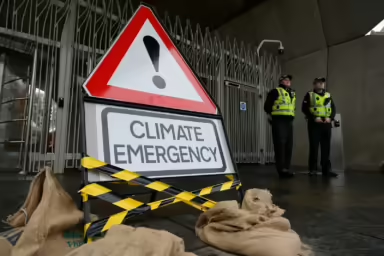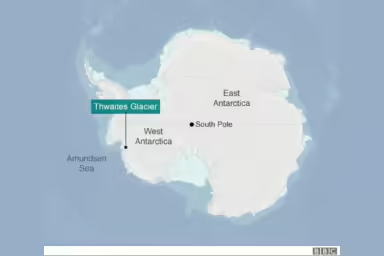Considering Earth’s interacting systems could pull the planet back into a stable operating space.
|
Listen To This Story
|
Earth left the last ice age 11,700 years ago and entered a period of relative climate stability known as the Holocene, in which humans have lived ever since. The Holocene has been good to us: We’ve developed agriculture. Civilizations have flourished. We’ve turned our attention toward goals more subtle than simple survival.
A recent publication asks how close Earth is to leaving this period of relative safety. Human activity has pushed ecological systems past six out of nine “planetary boundaries” — limits beyond which the planet is more likely to enter an unstable state, the publication reveals.
That doesn’t necessarily mean the end is nigh. “I’m a mother and a grandmother, and I certainly believe there is a future,” said Earth systems scientist Katherine Richardson from the University of Copenhagen, the lead author on the study. But policymakers must take action to correct the trends. “For our own sakes,” Richardson said, “we’re going to have to manage our relationship with the global environment.”
Setting Boundaries
In 2009, Richardson and her colleagues quantified characteristics of Earth’s systems that could affect environmental stability, such as atmospheric carbon dioxide levels, nutrient pollution, and degradation of natural environments, and designated boundaries beyond which these characteristics would reach concerning levels. At the time, the planet had crossed three of those boundaries.
By 2015, the number had risen to four. Now, six boundaries have been transgressed. “Clearly, this can’t continue,” Richardson said.
“Clearly, this can’t continue.”
In some cases, it’s tough to know where a boundary should lie, said Earth system scientist Jon Wang from the University of Utah, who was not involved in the work. For example, the researchers stated that the world should strive to completely eliminate “novel entities” — pollutants such as plastics and nuclear waste that would not exist on Earth at all were it not for humans. Scientists don’t really know how these substances will affect Earth’s ecosystems, so that might be setting the boundary at too conservative a level. “That was the one I kind of had an issue with,” Wang said.
The boundaries should be thought of as guardrails rather than thresholds, Richardson said, adding that “they’re sort of like your blood pressure.” A value above 120 over 80 does not guarantee health problems, but it’s out of the optimal range and comes with health risks. Similarly, “crossing one or more [boundaries] doesn’t guarantee that the world is going to go under,” she said. “It does indicate that there’s a risk of our activities changing overall Earth conditions,” potentially such that the planet can no longer support modern civilizations.
Interconnected Processes
Ecological processes are intertwined and must be considered synergistically, Richardson and her colleagues state. Wang uses the example of rising carbon dioxide levels, which aggravate climate change and acidify the ocean but may benefit plant growth, if only briefly.
In some cases, synergism simplifies solutions because policymakers can institute practices that benefit Earth in multiple ways. Curbing deforestation, for example, can curb climate change and keep ecosystems intact. But it also means that trying to address any one problem in isolation may end up aggravating others, said Earth system scientist Bob Howarth from Cornell University, who was not involved in the work.
Howarth used the example of no-till agriculture: When farmers plant crops without first turning over the soil, microbes release less carbon, and the soil is healthier. But under some conditions, the practice can also reduce the soil’s nitrogen capacity, causing more of the nutrient to wash into rivers. Switching to crops that live for multiple years and develop extensive root systems, on the other hand, could benefit the soil without the added nutrient pollution.
“We need to address the problems as a whole and think holistically toward solutions,” Howarth said.
Reasons for Hope
If Earth continues its current trajectory, humanity could face a future in which humans have to abandon some parts of the planet after they become too hot, whole ecosystems disappear, and destructive storms regularly wreak havoc, Richardson said. “I don’t envision that happening because I honestly believe knowledge is power.”
People “should be scared and therefore motivated to take action. Because we can reverse most of these trends, at least so far.”
In the past, societies have used scientific knowledge to reverse environmental degradation. For example, one of the planetary boundaries — stratospheric ozone depletion — surpassed its boundary in the 1990s but is now back in the safe zone. Similarly, levels of aerosol pollutants such as sulfur dioxide have been dropping since the 1980s for several reasons, including power plants now installing filters in their smokestacks and people in some parts of the world moving away from cooking over open fires.
The new report may alarm many people. “They should be scared and therefore motivated to take action,” Howarth said. “Because we can reverse most of these trends, at least so far.”
This story by Saima May Sidik was originally published by Eos Magazine and is part of Covering Climate Now, a global journalism collaboration strengthening coverage of the climate story.





